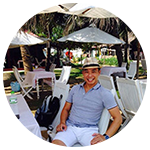Discover the ideal time for your Vietnamese adventure. This guide covers the distinct seasons of North, Central, and South Vietnam, helping you find the best weather for trekking, beaches, and city exploration.
The Best Time to Visit Vietnam: A Guide to the Seasons and Regions
Traveling through Vietnam is an opportunity to see a strikingly diverse country, which stretches 1600 kilometres from the moody rugged mountains in the north all the way down to tropical, sun-kissed beaches in the south. With this extent of the country, it’s impossible to say there is a sole best time to visit the country at once. Luckily, this also means there is always a perfect season for some part of Vietnam.
Whether it’s a desire to cruise through limestone karsts, explore ancient towns, or relax on a palm fringed island, this guide will assist you in deciding on the best time for your Vietnam adventure.
‘Golden Months’: Best General Time to Travel (March-April & September-November)
If you’re looking to travel across multiple regions, these shoulder months offer the best chance of nice weather across the whole country.
Here is why you’ll love it:
- Great Weather: The north is moving out of winter into the pleasant spring (also perfect weather for trekking). The south is past the rainy season; also perfect weather for exploring, enjoying even more moderate temperatures, and lower chances of rain in both Hanoi and Ho Chi Minh City.
- Great Conditions Everywhere: It’s the perfect time to trek in Sapa, lay on the beach along the central coast (in March-April for sure), and explore cities without oppressive heat!
- The Rural Landscape is Beautiful: The countryside will be green and lush thanks to the rains.
Things to Note:
- These months (if traveling in July-August as well) are popular months for visitors so you will want to book your flights and accommodation in advance.
- Central Vietnam is still in the tail end of its rainy season in September/October; be sure to check the forecast (i.e., Hoi An, Da Nang area).
Regional Overview: Determining the Best Timing for Your Trip
Since Vietnam’s climate differs throughout the country and regions, a more realistic way to find out that you will have the best trip possible, is to aim for a whole region.
1. Northern Vietnam (Hanoi, Halong Bay, Sapa)
The north has four seasons, which includes a cool and dry winter and a hot and humid summer.
Best Timing: Spring (March – April) & Autumn (September – November)
This is the peak travel time for a reason! In spring you can expect to be greeted with warm days and mostly clear skies which are perfect for wandering around Hanoi’s Old Quarter or taking an overnight cruise of Ha Long Bay. Autumn may be considered even better conditions with more reasonable temperatures, lower humidity, and golden rice terraces ready to harvested in the surrounding countryside of Sapa.
Worst Timing: Winter (December – February) & Summer (May – August)
Winter will be extremely chilly (grey especially in the mountains) and can be very cold with temperatures hovering close to freezing at times. The mystical (but cold) mist in Halong Bay makes it an idyllic place to visit to contemplate existence; just don’t forget your jacket! The summer months will be extremely hot with unbearable humidity and heavy rains that could put quite the damper on travel adventures.
2. Central Vietnam (Hoi An, Da Nang, Hue)
This region has an extended dry season and shorter concentrated, more aggressive wet season.
Best Timing: Dry Season (February – August)
This is your long stretch of sunshine! From February, the clouds will disappear and you can enjoy great weather cycling around the ancient streets of Hoi An, sunbathing on the beach of Da Nang, or wandering around the imperial city in Hue all in the mid-high 30C degree torrid heat and at least with long and beautiful, sunny days!
Tough Times: Rainy and Typhoon Season (September – January)
If you can avoid this time, do. This is during the peak typhoon season for the central coast and can expect heavy rains with a high threat of flooding especially around the very low-lying Hoi An area. This is also very important time of year for people that depend on beach visitor traffic (for example) that many of shops and people that depend on beachside visitors, will close up. Your travels possibilities could be extremely hampered.
3. Southern Vietnam (Ha Noi, Mekong Delta, Phu Quoc)
The south keeps it simple, wet or dry. The temperature stays warm.
Best Timing: Dry Season (December – April)
This is the best time of year of being in the south. You will experience less humidity and more sun means busy Ho Chi Minh City streets are easier to navigate and ONE last boat tour of the Mekong Delta to enjoy it all in comfort! This in high season as it’s the most desirable time of year to be in paradise (Phu Quoc) with no waves and a sunny sky.
Trys. Workable Off-Season: Wet Season (May – November)
Don’t let the term wet season turn you off completely! Most of the storms in this season really just mean a powerful rain shower in the afternoons, which leaves you enjoying clear as a bell sunny days. The landscape will be lush and green, fewer tourists, and lower prices than peak season, all with a raincoat, and a knowing that there is a shower to come on a daily basis.
The Least Expensive Time to Travel to Vietnam
If you’re a budget traveler you want to take advantage of the shoulder/rainy season which is approximately May – September.
- The Pros: You’ll get some of the best deals on flights, and hotels. Popular sites are much less crowded than in peak season, which makes for a much more enjoyable experience.
- The Cons: You need to be flexible. You may experience uncomfortably hot and humid weather, and daily rain showers; particularly in the north, and the south. In the central region, this period is during the beautiful dry season, but prices there would be higher.
A Special Note: The Tết Holiday (Lunar New Year)
Tết is the Vietnamese Lunar New Year, which is the most significant festival in Viet Nam. It usually occurs late January, to early February.
- The Pros: It really is an interesting time to see Vietnamese culture, with the whole country decorated in red and yellow, flower markets teeming with vibrant flower arrangements, and an unmistakable feeling of celebration.
- The Cons: Tết is generally a tough time for tourists. Many shops, restaurants, and places of attraction could be closed for several days. Transport will be fully booked as millions of people are travelling home to be with their families. Prices for accommodation will be much higher. t’s probably a good time for experienced travelers, or travelers who can afford to stay in place for the duration.
Quick Summary: Your Go-To Guide
| Region | Best Months | Weather to Expect |
|---|---|---|
| Northern Vietnam | March-April, Sept-Nov | Pleasant, dry, and clear. Ideal for trekking & cruising. |
| Central Vietnam | February-August | Hot, sunny, and dry. Perfect for beaches & sightseeing. |
| Southern Vietnam | December-April | Warm and dry with low humidity. Great for city & island life. |
| Nationwide Trip | March-April, Sept-Nov | The best compromise for good weather across all regions. |
Ultimately, Vietnam is a year-round destination as long as you point your compass to the right region. By matching your travel dates to the climate, you’re setting yourself up for an unforgettable journey through one of Southeast Asia’s most captivating countries.





